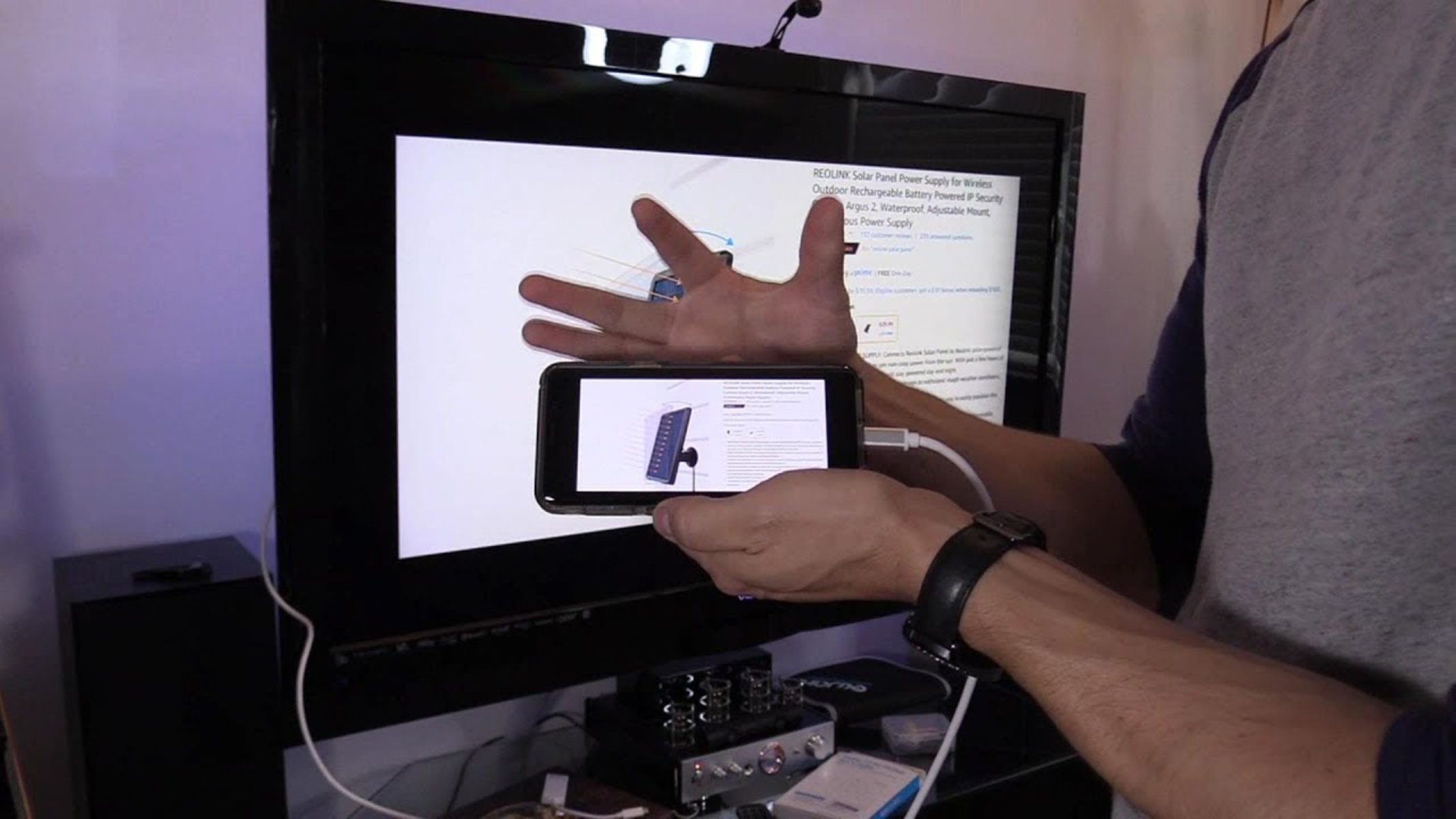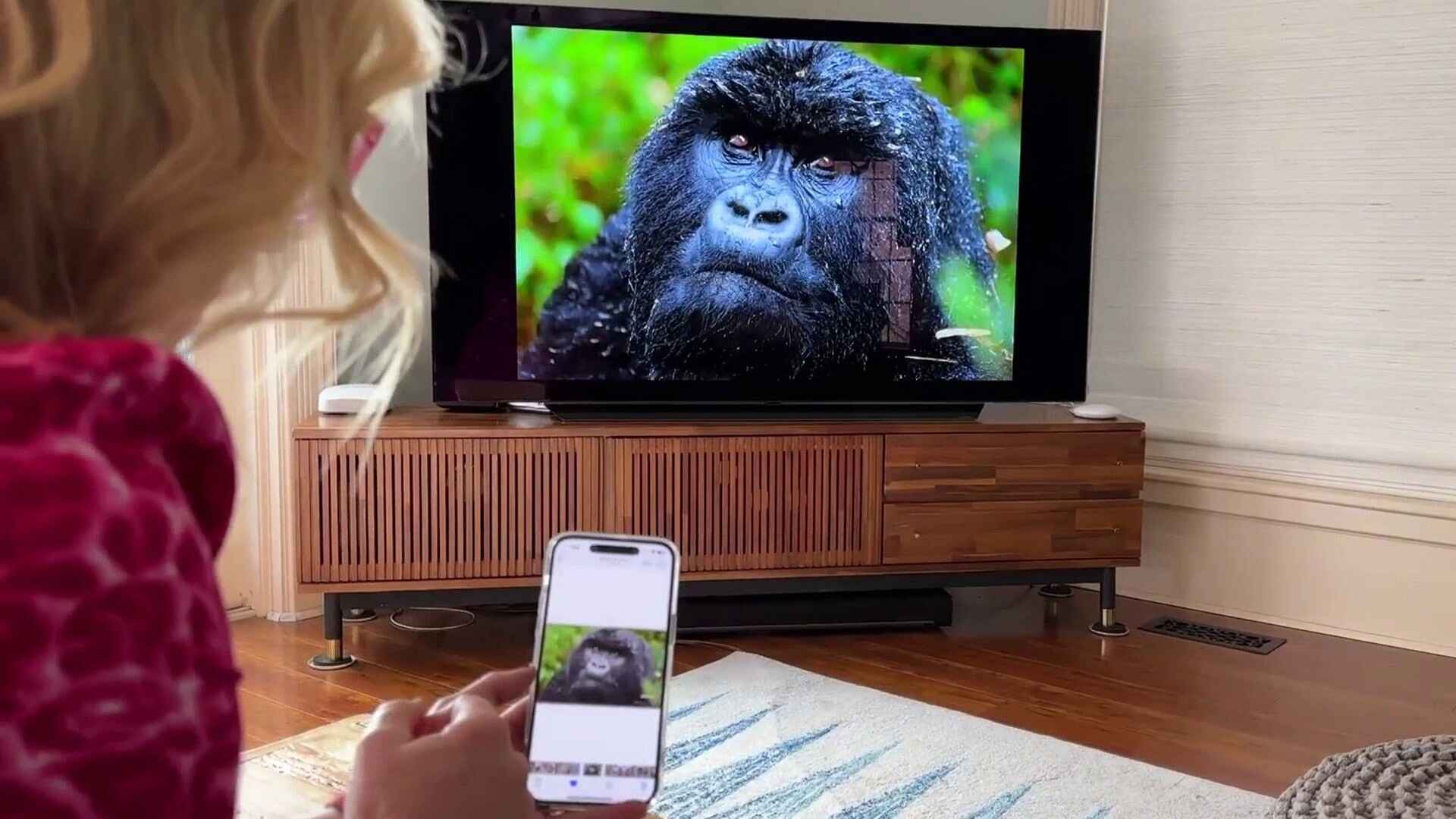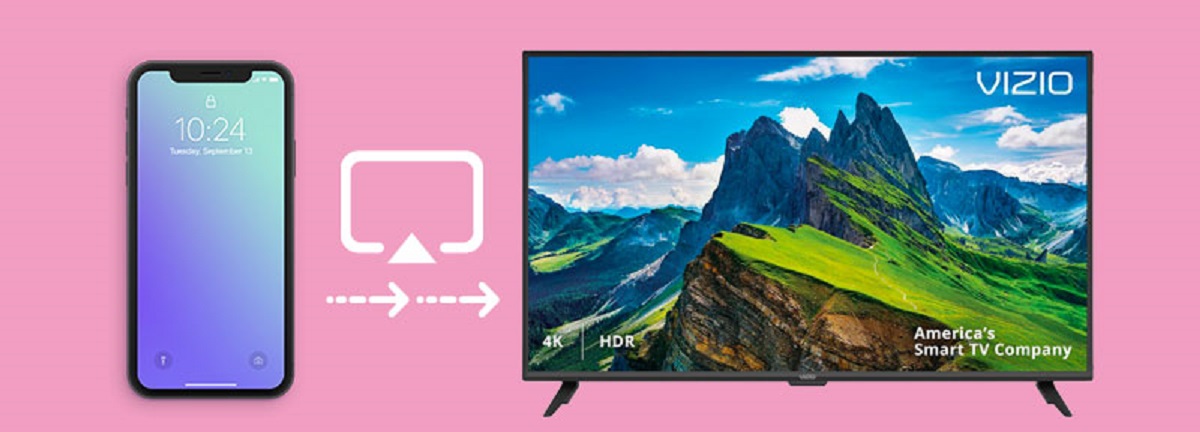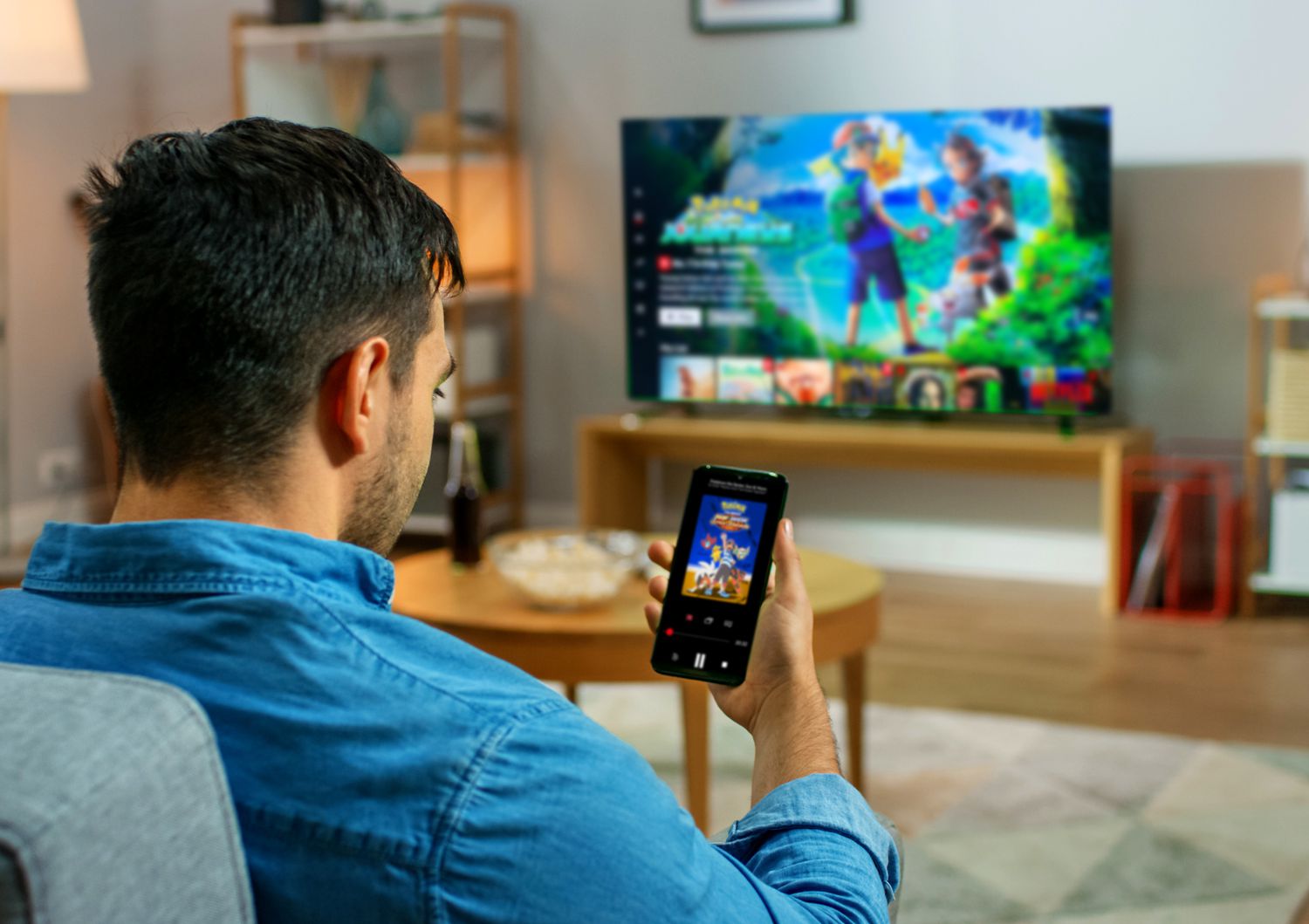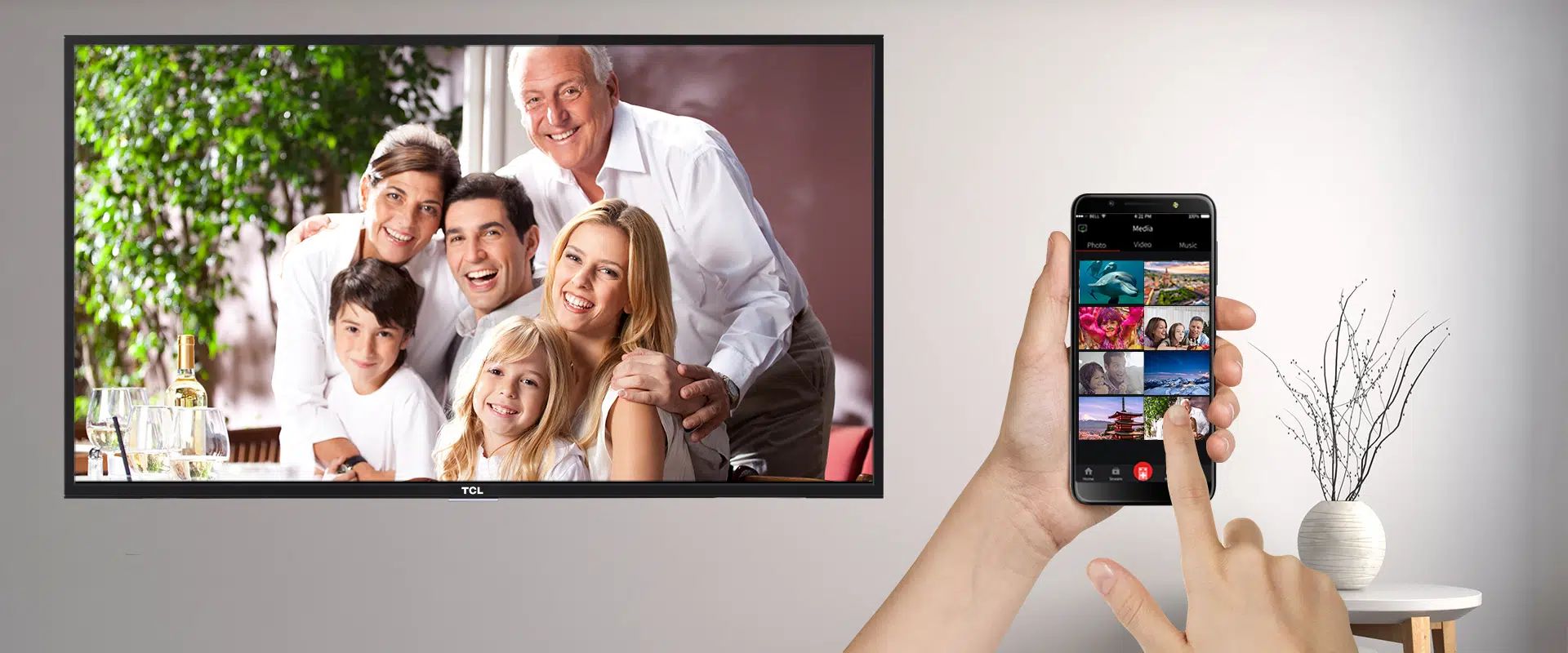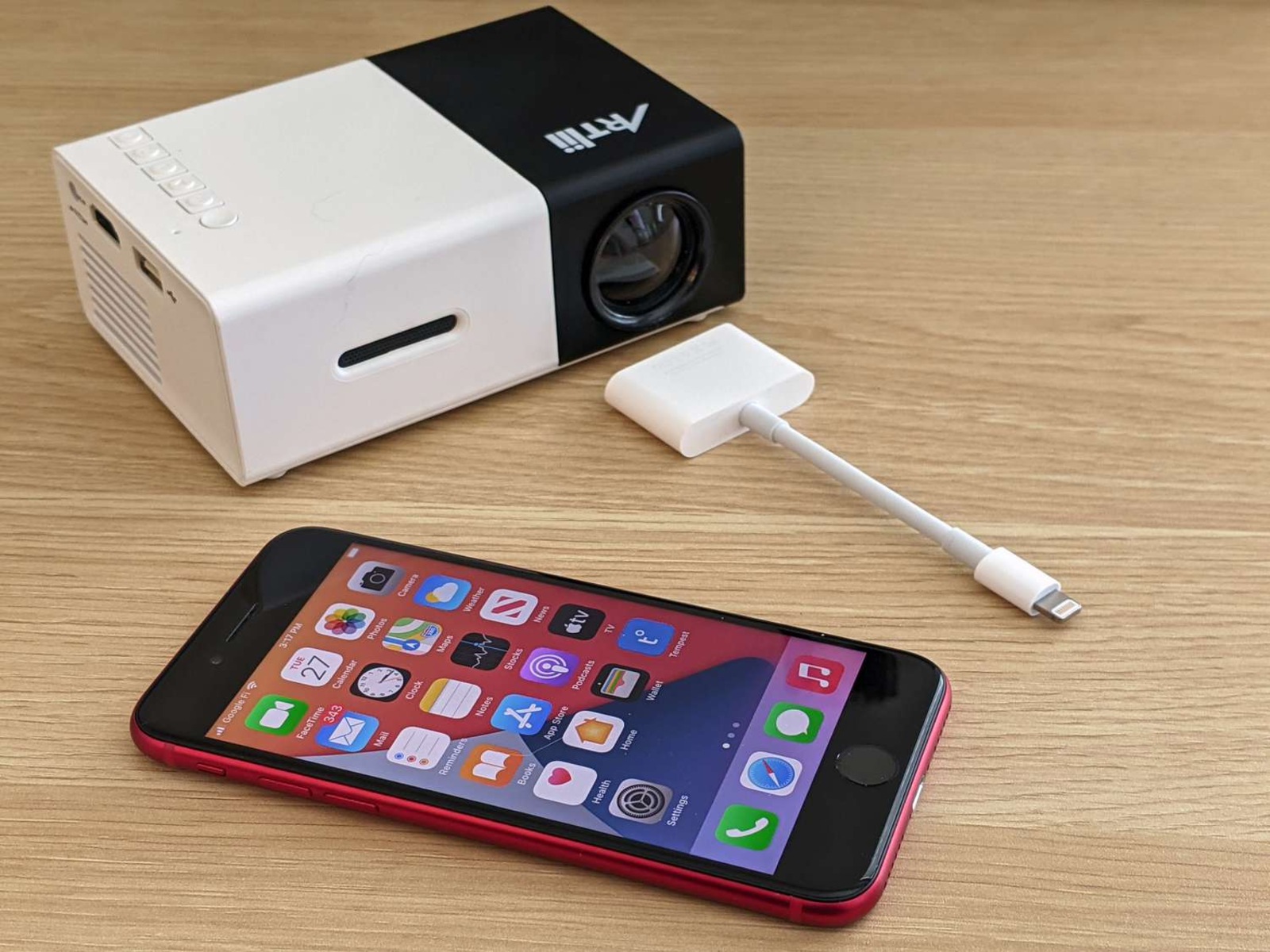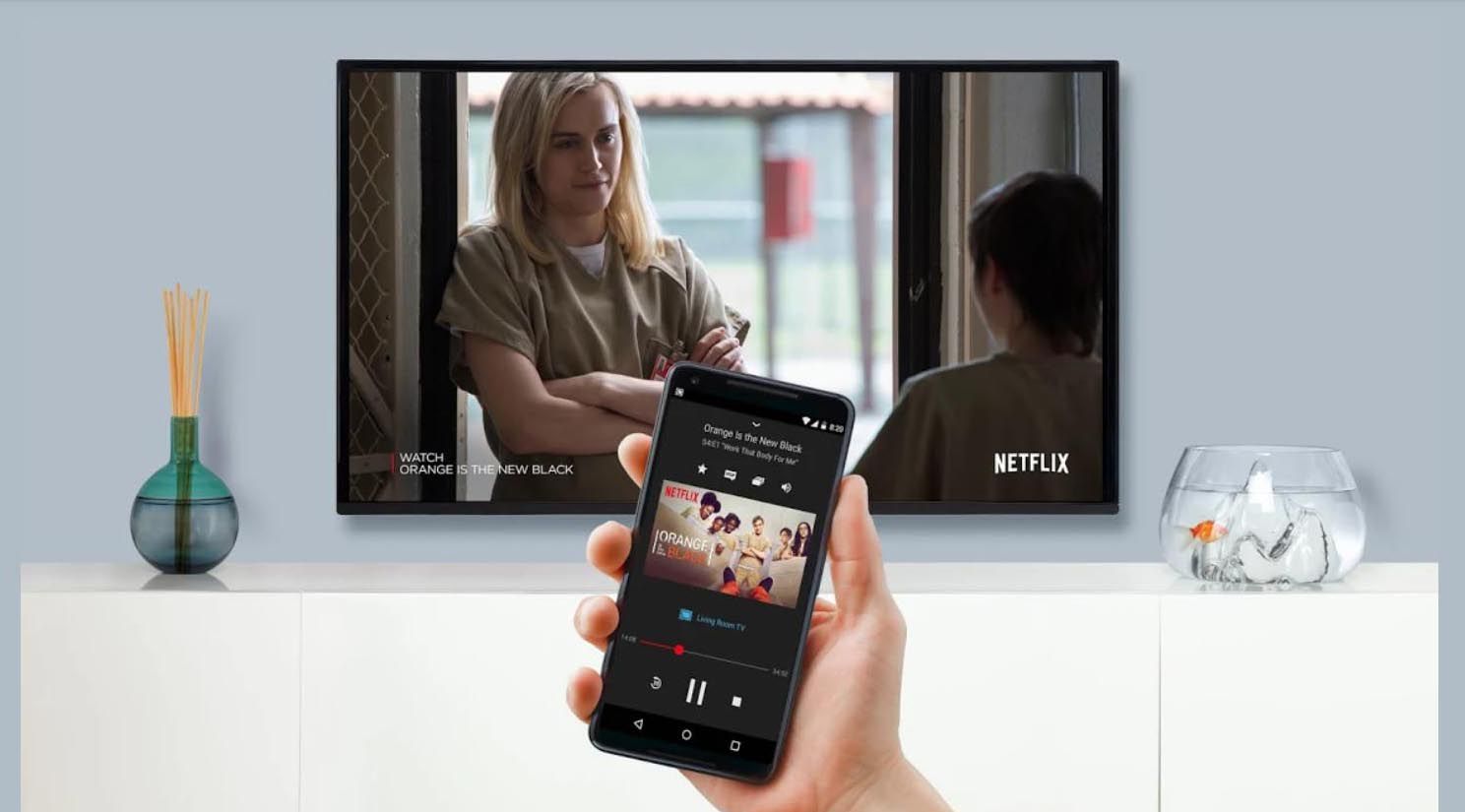Introduction
Welcome to our guide on how to connect your phone to your TV using an HDMI cable. With the increasing popularity of streaming services and the need for a larger screen for entertainment purposes, connecting your phone to your TV can greatly enhance your viewing experience. Whether you want to watch movies, play games, or share photos and videos with friends and family, connecting your phone to your TV can effortlessly transform it into a multimedia powerhouse.
Gone are the days of squinting at a small screen or huddling around a phone to share content with others. By utilizing an HDMI cable, you can easily connect your phone to your TV, allowing you to enjoy your favorite content on a much larger and more immersive display.
In this guide, we will walk you through the step-by-step process of connecting your phone to your TV using an HDMI cable. We will also provide tips and troubleshooting advice to help you overcome any potential hurdles along the way. Whether you have an Android or iOS device, this guide is designed to be accessible and applicable to a wide range of users.
So, if you’re ready to unlock the full potential of your phone’s multimedia capabilities and enjoy your content on the big screen, let’s dive into the world of connecting your phone to your TV with an HDMI cable.
What You Will Need
Before you begin the process of connecting your phone to your TV with an HDMI cable, you’ll need to gather a few essential items. Here’s a list of what you’ll need:
- Phone: You’ll obviously need your phone, whether it’s an Android or iOS device.
- TV: Make sure you have a TV with an HDMI input port. Most modern TVs have at least one HDMI port, but it’s always a good idea to double-check.
- HDMI Cable: You’ll need a standard HDMI cable to establish the connection between your phone and the TV. Ensure that the cable is long enough to reach from your phone to the TV comfortably.
- HDMI Adapter (if necessary): Depending on the type of phone you have, you may need an HDMI adapter or converter. For example, if you have an iPhone or iPad with a Lightning port, you’ll need a Lightning to HDMI adapter. Android devices may require a USB-C to HDMI adapter. Check your phone’s port type and purchase the appropriate adapter if needed.
- Power Source: Some HDMI adapters require external power sources. If this is the case, ensure that you have the necessary power source, such as a USB power adapter or power bank.
- Remote Control (optional): If you have a TV with HDMI-CEC (Consumer Electronics Control) capability, you can use your TV’s remote control to navigate and control your phone’s content on the TV. This feature allows for a more seamless and convenient viewing experience.
By having these items ready before you start, you’ll be well-prepared to connect your phone to your TV and make the most of your multimedia content. Let’s move on to the next steps and get your phone connected to the big screen!
Step 1: Check Your Phone’s Compatibility
Before you begin the process of connecting your phone to your TV with an HDMI cable, it’s important to ensure that your phone is compatible with this type of connection. Here’s how you can check your phone’s compatibility:
- Check the Phone’s Port: Take a look at your phone’s charging port or any other available ports. Most modern Android devices use a USB-C port, while older models may have a Micro USB port. iPhones and iPads typically have a Lightning port. Make a note of the port type on your phone.
- Research the Phone’s Specifications: Go online and search for your phone’s specifications. Look for information regarding video output capabilities or HDMI support. If your phone supports video output through its charging port, it’s likely compatible with an HDMI connection.
- Check for Compatible Adapters: If your phone’s port type is different from HDMI, check if there are any compatible adapters available. Manufacturers often produce adapters specifically designed to connect phones with different port types to HDMI. Determine the adapter you need based on your phone’s port type.
It’s important to note that not all phones support HDMI output, especially older models or budget-friendly devices. If you discover that your phone isn’t compatible with HDMI, don’t worry – there are alternative ways to connect your phone to a TV, such as using wireless casting devices or connecting via a USB cable. Explore these options if HDMI connectivity is not available for your phone.
By checking your phone’s compatibility in advance, you’ll be aware of any limitations or requirements when it comes to connecting it to your TV with an HDMI cable. Now that you’ve determined your phone’s compatibility, let’s move on to gathering the necessary equipment for the connection process.
Step 2: Gather the Right Equipment
Now that you have confirmed your phone’s compatibility with HDMI connectivity, it’s time to gather the necessary equipment for a successful connection. Here’s what you’ll need to proceed:
- HDMI Cable: Start by obtaining an HDMI cable. Ideally, you should use a high-speed HDMI cable that supports 4K resolution if your phone and TV are capable of it. These cables provide better video and audio quality. The length of the cable will depend on the distance between your phone and the TV, so choose an appropriate length.
- HDMI Adapter (if necessary): Depending on your phone’s port type, you may need an HDMI adapter or converter. For instance, if your phone has a USB-C port, you’ll need a USB-C to HDMI adapter. If it has a Lightning port, you’ll require a Lightning to HDMI adapter. Ensure that the adapter you choose is compatible with your phone model.
- Power Source (if required): Some HDMI adapters require an external power source to function properly. Check if the adapter you have or plan to purchase needs a power source. If it does, make sure you have the appropriate power supply, such as a USB power adapter or power bank.
- TV with HDMI Input: Verify that your TV has an HDMI input port. Most modern TVs come with multiple HDMI ports, allowing you to connect multiple devices simultaneously. Locate the HDMI input port(s) on your TV and make a note of their locations.
- Remote Control (optional): If your TV supports HDMI-CEC, you can use your TV’s remote control to navigate through your phone’s content on the TV screen. HDMI-CEC enables seamless control, allowing you to switch inputs and control playback using a single remote control.
By gathering these essential components, you’ll be prepared to connect your phone to your TV seamlessly. Once you have all the equipment in place, proceed to the next step, which involves establishing the physical connection between your phone and the TV using the HDMI cable and any necessary adapters.
Step 3: Connect the HDMI Cable
With your equipment ready, it’s time to connect your phone to your TV using the HDMI cable. Follow these simple steps to establish the physical connection:
- Locate the HDMI port on your TV: Look for an HDMI input port on your TV. It is usually labeled as “HDMI” and numbered (e.g., HDMI 1, HDMI 2, etc.). Take note of which HDMI port you will be using for the connection.
- Connect one end of the HDMI cable to your phone: Insert the HDMI end of the cable into the corresponding port on your phone or adapter. Ensure that the connection is secure.
- Connect the other end of the HDMI cable to your TV: Plug the other end of the HDMI cable into the HDMI port on your TV that you identified earlier. Make sure the connection is firmly established.
If you’re using an HDMI adapter, remember to connect the HDMI cable to the adapter first, and then connect the adapter to your phone. Some adapters may also require an external power source, so ensure that it is connected if necessary.
Once the HDMI cable is securely connected on both ends, you have successfully established the physical connection between your phone and your TV. Before proceeding, ensure that the connected devices are powered on and ready for the next steps.
In the next step, we’ll guide you on adjusting the input on your TV to recognize the connection from your phone. This step is crucial to ensure that the content from your phone is displayed correctly on the TV screen.
Step 4: Adjust Your TV’s Input
After connecting the HDMI cable between your phone and your TV, it’s essential to adjust the input settings on your TV to recognize the connection. Here’s how you can adjust your TV’s input to display your phone’s content:
- Turn on your TV: Ensure that your TV is powered on and ready for use.
- Access the TV’s input menu: Using your TV’s remote control, locate the input or source button. Press it to access the TV’s input menu.
- Select the HDMI input: In the input menu, navigate and select the HDMI input that corresponds to the HDMI port you connected the cable to. For example, if you connected the cable to HDMI 1, select HDMI 1 as the input source.
- Confirm the connection: After selecting the HDMI input, your TV should display the content from your phone. If it doesn’t, ensure that both your phone and TV are on the correct input and that the HDMI cable is securely connected. You may need to restart your phone or TV if the connection is not recognized initially.
Once you’ve confirmed the connection, your phone’s screen should be mirrored or extended on the TV screen, depending on your phone’s settings. If you’re not seeing any content on the TV, refer to the troubleshooting section for possible solutions.
Congratulations! You have successfully adjusted your TV’s input to recognize the HDMI connection from your phone. In the next step, we’ll guide you on setting up your phone’s display options to ensure the best viewing experience on the TV screen.
Step 5: Set Up Your Phone’s Display
Now that your phone is connected to your TV and the TV is displaying the content from your phone, it’s time to set up your phone’s display options to optimize the viewing experience. Follow these steps to adjust your phone’s display settings:
- Access your phone’s settings: Open the settings app on your phone. It is usually represented by a gear icon.
- Find the “Display” or “Screen Mirroring” option: Look for the display settings or screen mirroring option in the settings menu. The exact location may differ slightly depending on your phone’s make and model.
- Select screen mirroring settings: If available, select the screen mirroring option. This will allow you to adjust the display settings specifically for the TV screen.
- Choose the display mode: Depending on your phone, you may have options such as “Duplicate,” “Extend,” or “Second Screen.” Duplicate will mirror your phone’s screen on the TV, while Extend will allow you to use the TV as an additional display. Select the mode that suits your preference and needs.
- Adjust resolution and aspect ratio: If your phone allows it, you may be able to adjust the resolution and aspect ratio for the TV display. Opt for the highest resolution supported by both your phone and TV for the best picture quality.
- Enable any additional display options: Explore the display settings to see if there are any additional options available, such as adjusting color settings or enabling HDR (High Dynamic Range) output if supported by your devices.
Once you have adjusted the necessary display settings, you should see the changes reflected on the TV screen. If your phone’s screen doesn’t automatically resize to fit the TV, you may need to manually adjust the zoom or display size within the display settings on your phone.
Now that you’ve successfully set up your phone’s display options, you can sit back and enjoy your favorite content on the big screen. In the next step, we’ll provide you with some troubleshooting tips to help address any issues you might encounter during the connection process.
Step 6: Troubleshooting Tips
While connecting your phone to your TV using an HDMI cable is usually a straightforward process, you may encounter some issues along the way. Here are some troubleshooting tips to help you overcome common problems:
- Double-check the connections: Ensure that the HDMI cable is securely connected to both your phone and TV. Sometimes, a loose connection can cause a lack of display or intermittent signal. Reinsert the cable if necessary.
- Restart your phone and TV: If you’re experiencing issues with the connection, try restarting both your phone and TV. This can help refresh the system and resolve any temporary glitches.
- Update firmware and apps: Keep your phone’s firmware and apps up to date. Outdated software can sometimes cause compatibility issues. Check for updates and install them if available.
- Use the correct HDMI input: Ensure that you have selected the correct HDMI input on your TV. Some TVs have multiple HDMI inputs, so make sure you have selected the one connected to your phone.
- Try a different HDMI cable: If you’re still facing connectivity issues, try using a different HDMI cable. It’s possible that the cable is faulty or not compatible with your devices.
- Check adapter compatibility: If you’re using an adapter, make sure it is compatible with your phone and TV. Some adapters may not work with certain device models or require additional settings to be enabled.
- Check power source for adapter: If your HDMI adapter requires external power, ensure it is connected to a power source. A lack of power can cause the adapter to malfunction or not transmit the signal properly.
- Adjust phone display settings: If the display on your TV is not fitting properly or there are black bars on the screen, adjust the zoom or display settings on your phone to ensure a proper fit.
If you’ve tried these troubleshooting tips and are still experiencing difficulties, consult the user manual for your phone and TV or reach out to the manufacturer’s support for further assistance.
With these troubleshooting tips in mind, you should be able to resolve most common issues that may arise when connecting your phone to your TV using an HDMI cable. Now, you can fully enjoy your favorite content on the larger screen.
Conclusion
Connecting your phone to your TV using an HDMI cable can greatly enhance your viewing experience, allowing you to enjoy your favorite content on a larger and more immersive screen. By following the steps outlined in this guide, you can easily establish a seamless connection between your phone and your TV.
In the beginning, it’s important to check your phone’s compatibility with HDMI connectivity and ensure that you have the necessary equipment, including an HDMI cable and any required adapters. Then, you can proceed to connect the HDMI cable, adjust your TV’s input, and set up your phone’s display options. If you encounter any issues along the way, our troubleshooting tips offer solutions to common problems.
Remember to check for firmware and app updates on your phone, as well as compatibility of adapters and HDMI cables. By staying up to date and addressing any connectivity issues, you can ensure a smooth and enjoyable experience when connecting your phone to your TV.
Now, connect your phone to your TV, sit back, and enjoy a bigger and better viewing experience. Whether you’re streaming movies, playing games, or sharing photos and videos with friends and family, connecting your phone to your TV with an HDMI cable opens up a whole new world of entertainment possibilities.
Thank you for following this guide. We hope it has been helpful in enabling you to connect your phone to your TV effortlessly. Enjoy your favorite content on the big screen!







